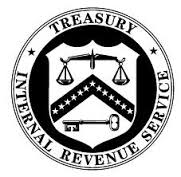 Year after year, we hear about tax-related identity theft, which is both a complicated and widespread problem for millions of individual and business taxpayers, as well as for the IRS.
Year after year, we hear about tax-related identity theft, which is both a complicated and widespread problem for millions of individual and business taxpayers, as well as for the IRS.
The ID theft typically involves the unauthorized use of a taxpayer’s personal or business information to fraudulently claim a tax refund. Its allure to thieves, of course, is that most taxpayers don’t even become aware they are victims until receiving notice from the IRS, or another federal or state agency. Some only find out when they try to file an electronic return and it is rejected by the IRS as a duplicate return.
While individual taxpayers are the most common targets, businesses are also at significant risk —identity thieves will steal employee information or other sensitive business information (such as employer identification number), either to file fraudulent business returns or to generate fraudulent individual income tax refunds by reporting false income and withholding on fictitious Forms W-2.
In April, 2016 IRS Commissioner John Koskinen testified before the U.S. House Ways and Means Oversight Subcommittee about how pervasive the problem has become and that thieves are continually seeking new sources of information that will help them have a better chance of going undetected by IRS fraud filters.
Identity theft cases are among the most complex for the IRS to handle, according to its own admission, yet the agency continuously seeks to improve its efforts on detection, prevention and provide assistance to victims.
During the April 19 meeting, Koskinen described how thieves are now increasingly creating counterfeit W-2 forms that are filed with false returns. Those worries led the agency “to launch a pilot program earlier this year testing the idea of adding a verification code to Form W-2 that would verify the integrity of Form W-2 data being submitted to the IRS,” Koskinen said.
The commissioner said the IRS recruited four major payroll service providers who added a special “coded number” on approximately two million individual W-2s. Each coded number was known only to the agency, the payroll service provider and the individual receiving the W-2. Koskinen added that the verification code could not be reverse-engineered.
“Since this identifier is unique, any changes to the Form W-2 information provided when filed are detected by the IRS,” he said.
Because of its success at detecting and preventing fraud, Koskinen said the agency plans to expand the pilot program for next filing season by increasing the number and types of Form W-2 issuers involved in the test. This is one step in combating tax return fraud.
To view Koskinen’s prepared remarks to the subcommittee, click here.
Written By: Dawda Mann Attorney, Jeffrey Moss.

